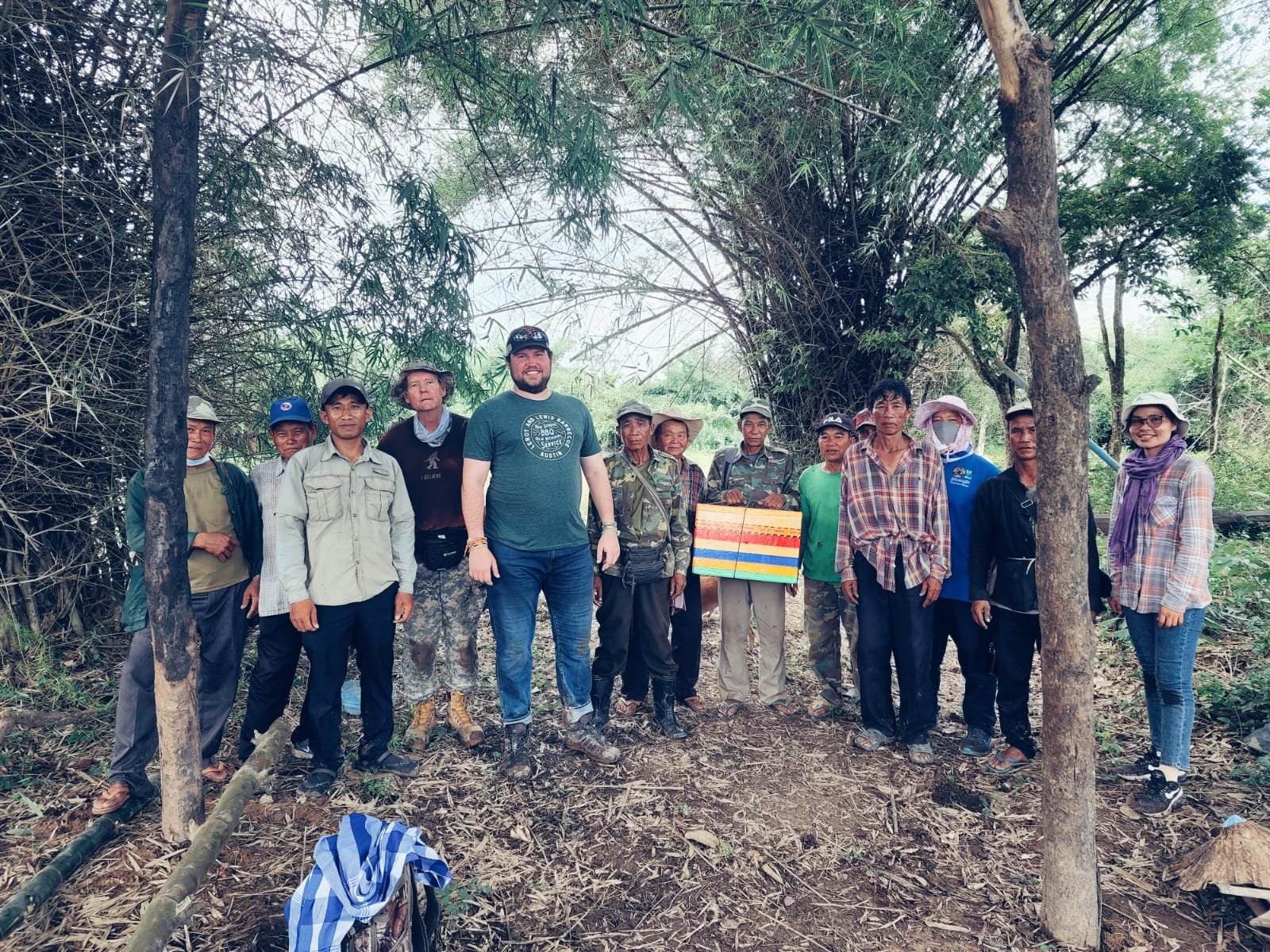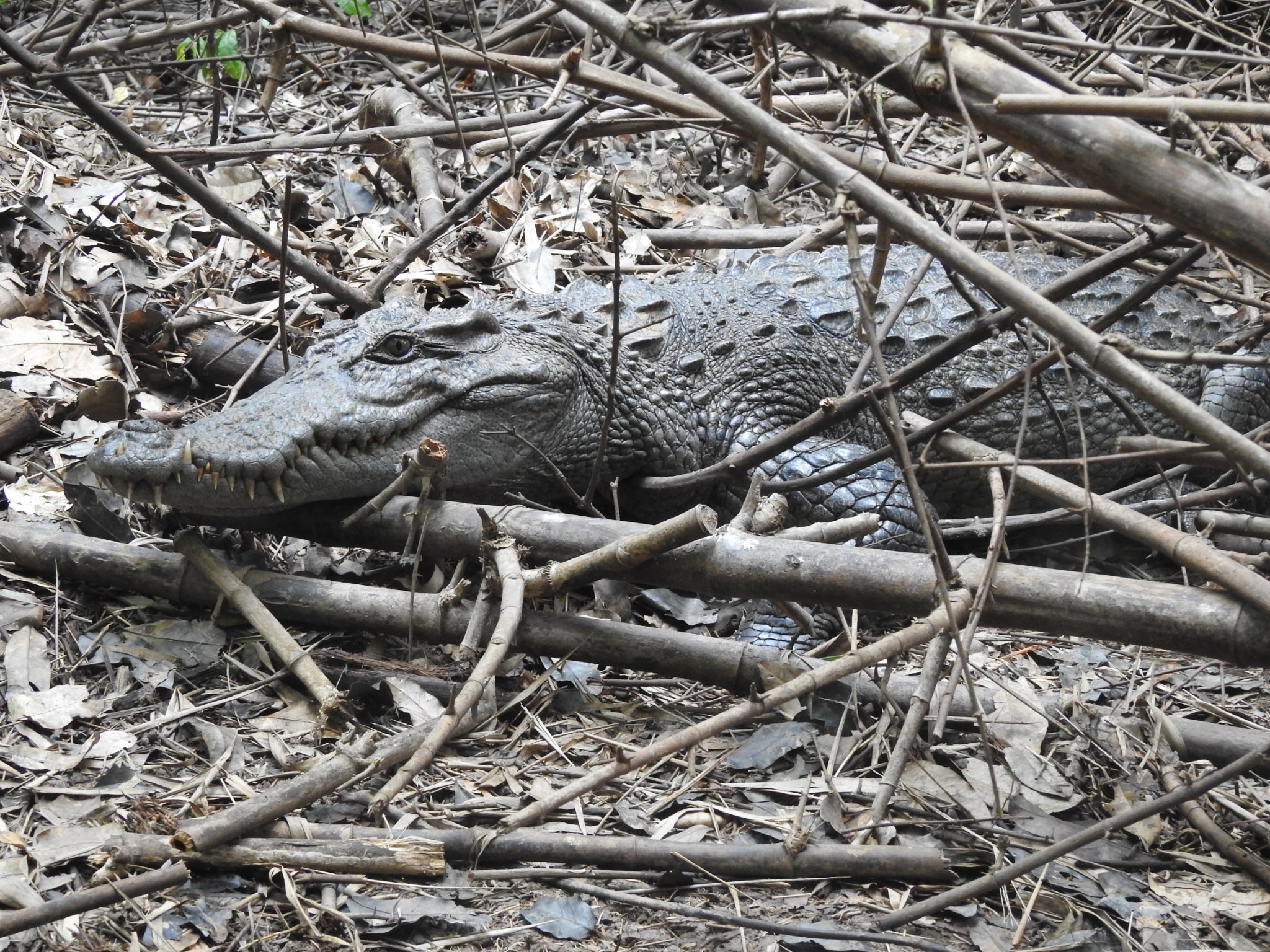Scientists from the Wildlife Conservation Society, together with their government partners and members of the Ban Natay Village Conservation Team conducted field biodiversity monitoring and collected eggs from the nest of a Siamese crocodile in the Greater Xe Champhone Wetlands in Savannakhet Province. Siamese crocodiles are critically endangered, with less than 1,000 individuals in the wild. In natural populations far less than 5% of eggs laid will be able to survive to adulthood. By collecting eggs from a few nests each year and then raising hatchlings for 2 years until they are nearly 1 meter in length, the Xe Champhone population can have a much better and faster chance to recover. This program is fully supported by local communities who have long prohibited any hunting of the crocodiles due to traditional beliefs and have never reported any issues with the shy species.
The mother crocodile was raised in captivity and released eight years ago. She successfully built a nest and laid eggs, making this the first documented case of a “head-started” Siamese crocodile nesting in the wild in Laos and only the 2nd time globally, as in 2020 scientists with Fauna and Flora International (FFI) found a captive-reared female nesting in 2020, however all of the eggs in that nest were unfortunately infertile. After crocodiles hatch, scientists notch particular scales in their tails, a process called scute marking. This mother crocodile was identified as number 36, and records show she hatched in the Ban Tansoum community-run head-starting facility in August 11, 2012 and was released into the wild in 2014. During the seasonal floods which occur each year, she made her way to an oxbow lake several Kilometers away from her original release site, another promising finding that this elusive and difficult to track species is expanding across the landscape.
“This was a very exciting day for Siamese crocodile conservation across South East Asia as it gives further evidence that the head-starting model is a successful tool in the recovery of this critically endangered species,” said Samuel Leslie, Savannakhet Landscape Program Director, who joined the nest survey expedition that was led by WCS regional herpetology specialist Dr. Steve Platt and Savannakhet Biodiversity Officer Sounatha Boutxakittilath.
The Xe Champhone Wetlands are home to Lao PDR’s last remaining breeding populations of Siamese crocodiles, a fact which lead to the site being declared a “Wetland of International Importance” under the Ramsar Convention. While local spiritual beliefs provide strong protections to these crocodiles from hunting, ongoing habitat destruction inside and adjacent to the Ramsar Site puts this population at great risk. Only 3 out of 30 of Crocodile #36’s eggs were found to be fertile, which could be tied to recent large land clearings next to this oxbow lake, that may have driven male crocodiles away. Luckily other nests have held a higher percentage of fertile eggs. WCS is working to secure protections against the destruction of critical habitats while also working to provide local communities with improved planning for more sustainable resource use, and alternative livelihoods that support sustainable wetlands management through funding by the Margret A. Cargill Foundation, and the European Union and French Development Agency financed Ecosystem Conservation through Integrated Landscape Management in Lao PDR "ECILL" Project.

